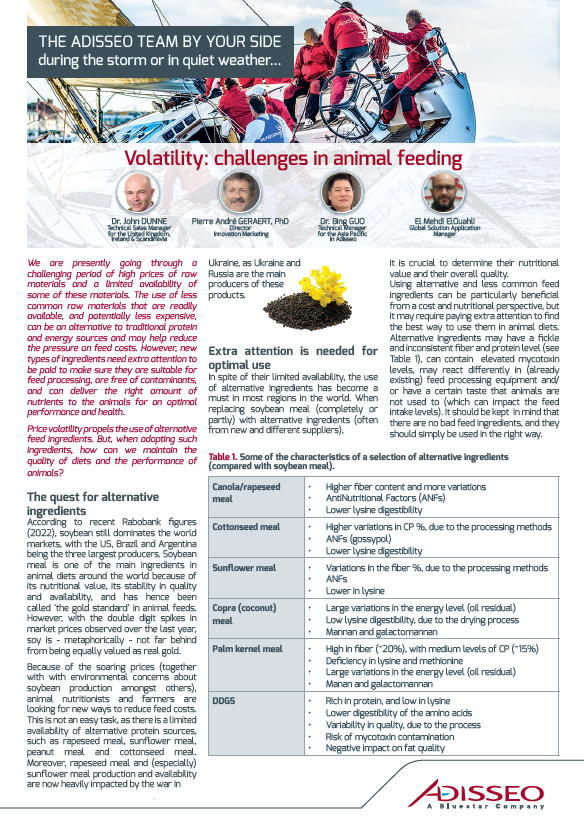
We are presently going through a challenging period of high prices of raw materials and a limited availability of some of these materials.
The use of less common raw materials that are readily available, and potentially less expensive, can be an alternative to traditional protein and energy sources and may help reduce the pressure on feed costs.
However, new types of ingredients need extra attention to be paid to make sure they are suitable for feed processing, are free of contaminants, and can deliver the right amount of nutrients to the animals for an optimal performance and health.
Price volatility propels the use of alternative feed ingredients. But, when adopting such ingredients, how can we maintain the quality of diets and the performance of animals?

